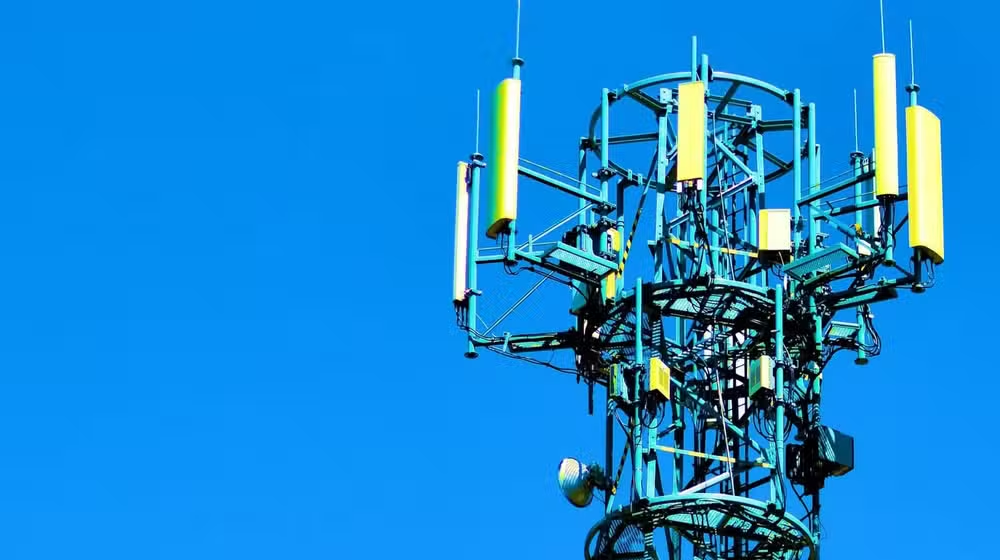Heavy rains and floods in Pakistan have severely disrupted telecom services, affecting thousands of mobile and internet users across the country. According to the Pakistan Telecommunication Authority (PTA), 4,349 telecom sites were reported down due to flooding and power outages, impacting connectivity in multiple regions. While 4,137 sites have already been restored, 212 sites—primarily in Punjab—remain out of service due to persistent waterlogging and electricity issues.
Telecom Services Hit Hard by Flooding
The disruption of telecom services has highlighted the vulnerability of Pakistan’s communication infrastructure to natural disasters. The current monsoon season has brought record-breaking rainfall, resulting in widespread flooding, particularly in Punjab. These conditions have not only displaced communities but also created significant challenges for restoring telecom infrastructure.
Power outages and damaged power supply systems are the primary reasons many sites remain down. Restoration teams are working around the clock to bring affected towers back online, but waterlogged areas have made it difficult to access the sites safely.
PTA and Telecom Companies Step In
The PTA, in close coordination with telecom operators, is leading efforts to restore telecom services. Teams are actively repairing equipment, deploying generators, and ensuring that mobile and internet connectivity is gradually restored. The PTA has assured the public that stability in communication systems is a top priority, especially during this emergency when reliable connectivity is vital for rescue and relief operations.
According to the PTA’s latest update, the authority is monitoring the situation through the National Emergency Telecommunication Coordination Center. This center is serving as a hub for real-time coordination among telecom operators, power supply companies, and emergency response teams.
Punjab Faces the Most Challenges
Out of the 212 telecom sites still offline, all are located in Punjab. The region has been one of the hardest hit by floods this season, with rising water levels submerging urban and rural areas alike. Waterlogging has delayed repair work, as many sites cannot be accessed until water recedes.
Punjab is also a critical region for Pakistan’s mobile and internet users, making the restoration of telecom services here a national priority. The PTA has expressed confidence that once water levels drop, the remaining sites will be fully restored.
Recent Statistics on Telecom Infrastructure
To understand the scale of the issue, it’s important to look at some statistics:
- 4,349 telecom sites were initially affected by floods and rains.
- 4,137 sites (95%) have already been restored.
- 212 sites remain down, all of them in Punjab.
- Pakistan has more than 190 million cellular subscribers as of 2024, meaning even temporary disruptions impact millions of people.
These numbers show that while a majority of sites are operational again, continued disruption in Punjab underscores the scale of the challenge faced by telecom providers.
Importance of Telecom Services During Emergencies
The current crisis underscores just how critical telecom services are during natural disasters. Communication networks play a vital role in coordinating rescue operations, enabling people to stay in touch with loved ones, and supporting emergency services.
Without stable mobile and internet connectivity, affected communities face delays in receiving aid, medical assistance, and evacuation updates. That’s why PTA and telecom operators are prioritizing quick restoration, despite the challenges posed by waterlogging and damaged power supply systems.
Future Preparedness for Telecom Sector
The repeated impact of floods on telecom services raises important questions about the resilience of Pakistan’s communication infrastructure. Experts suggest that telecom operators need to invest in:
- Flood-resistant equipment and elevated tower installations in flood-prone areas.
- Backup power solutions, including solar-powered systems, to minimize dependency on traditional electricity grids.
- Disaster response planning with rapid deployment units that can reach affected areas more quickly.
Such measures would not only improve service reliability during disasters but also strengthen national preparedness for future emergencies.
Government and Public Response
Public frustration over disrupted telecom services has been high, especially in Punjab where connectivity remains unstable. In response, the government and PTA have reaffirmed their commitment to ensuring uninterrupted mobile and internet services. Relief agencies are also working alongside telecom operators to make sure that communication remains available for both the public and emergency responders.
The public has been urged to conserve mobile data and minimize unnecessary calls in affected regions to reduce network congestion. This collective effort can help ensure that critical communication lines remain open during the ongoing recovery phase.
The heavy rains and floods in Pakistan have once again highlighted the essential role of telecom services in times of crisis. While a majority of affected sites have already been restored, challenges in Punjab continue to delay full recovery. PTA and telecom companies are working tirelessly to bring all sites back online, with a clear focus on ensuring uninterrupted communication for millions of users.
Looking ahead, building a more resilient telecom infrastructure will be key to safeguarding connectivity during future disasters. Strengthening disaster preparedness today will ensure that Pakistan’s telecom sector remains reliable even in the face of climate-related challenges.



